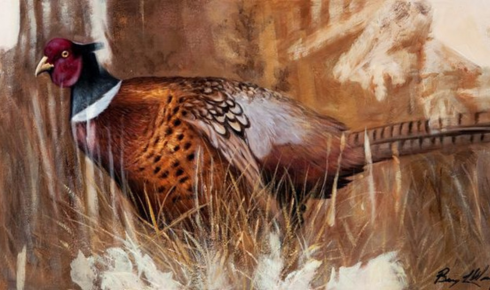Table of Contents
- Home Décor Enhancements
- Fashion Accessories
- Fly Tying for Anglers
- Jewelry Making
- Fine Art Creations
- Crafting Tips and Considerations
Ringneck pheasant feathers are prized for their exquisite colors, intricate patterns, and exceptional natural appeal. From the iconic barred tail feathers to the iridescent body plumes, these materials offer endless creative possibilities for anyone passionate about blending nature with art. For artists, decorators, and craftspeople, exploring ways to use ringneck pheasant feathers unlocks new opportunities to elevate everything from home interiors to unique accessories and fine art projects.
Whether you’re a seasoned designer or an enthusiast exploring natural materials for the first time, incorporating pheasant feathers into your projects introduces organic beauty and texture that manufactured materials can’t match. Their versatility allows for elegant home décor, striking fashion statements, intricate fishing flies, and much more. When thoughtfully sourced and creatively applied, these feathers can transform everyday projects into eye-catching works of art.
Home Décor Enhancements
Accent pieces created with pheasant feathers can bring a touch of rustic elegance to any home. Arranging feathers in glass vases, wooden bowls, or as part of seasonal centerpieces transforms simple materials into sophisticated conversation starters. Pheasant feathers pair beautifully with dried botanicals, twigs, and mosses, offering a long-lasting alternative to cut flowers. This approach adds visual interest to mantels, table centerpieces, and wall art, making it easy to refresh interiors with minimal effort. For more guidance, large lifestyle portals such as HGTV offer step-by-step tutorials on constructing stunning feather centerpieces.
Fashion Accessories
Pheasant feathers have become highly sought-after in the world of fashion, with their natural hues and striking textures appearing in headbands, hats, lapel pins, belts, and even integrated into couture collections. According to Events Wholesale, these feathers can be creatively reused in a variety of fashion and décor projects, making them both stylish and sustainable options. Designers utilize the feather’s innate patterns to enhance both classic and bohemian styles. For a subtle touch, attach a single feather to a wide-brimmed hat; for bolder looks, cluster feathers on headpieces or jackets. Not only do these accents draw the eye, but they offer a nature-inspired alternative to synthetic embellishments.
Fly Tying for Anglers
Pheasant feathers hold a legendary place in fly tying for anglers. Fly fishing enthusiasts carefully select specific feather types—from the mottled brown tail feathers to the small iridescent body feathers—to imitate a variety of aquatic insects. These natural materials add realism and movement to fishing flies, which can entice even the wariest fish. For many, the craft of fly tying is both a practical pursuit and a meditative art form.
Jewelry Making
Jewelry designers favor pheasant feathers for their lightweight structure and bold, organic appearance. Incorporating them into earrings, pendants, or brooches allows for the creation of pieces that combine elegance with individuality. Each feather is unique in color and pattern, ensuring no two creations are the same. This practice appeals to individuals seeking eco-friendly, one-of-a-kind accessories for both everyday wear and special occasions. Embracing this trend not only supports sustainable design but also showcases the natural beauty often lost in mass-produced items.
Fine Art Creations
Fine artists find endless inspiration in the delicate structure and coloration of pheasant feathers. Some contemporary artists use feathers as their primary canvas, intricately carving or etching detailed designs into the plumes themselves. Others integrate feathers into mixed-media paintings or three-dimensional installations, highlighting the organic contrasts between feather, paint, and other natural elements. Notably, some museum exhibitions have featured feather art, bringing this humble material into the spotlight of the fine art world. For remarkable examples and artistic inspiration, see Smithsonian Magazine. Pheasant feathers continue to captivate creatives across disciplines, bridging the gap between tradition and innovation. Their natural elegance offers a unique texture and movement that few other materials can replicate. As more artists experiment with sustainable and organic mediums, pheasant feathers are finding a renewed place in contemporary art conversations.
Crafting Tips and Considerations
Proper care is essential when working with natural feathers. Clean them, freeze to remove pests, and preserve them with borax or gentle washing. Ethically sourced feathers, especially from natural molting, support sustainability and humane practices. Choosing responsible vendors reduces environmental impact and ensures future availability. With mindful preparation and sourcing, ringneck pheasant feathers can enhance artistic creations while honoring nature.

